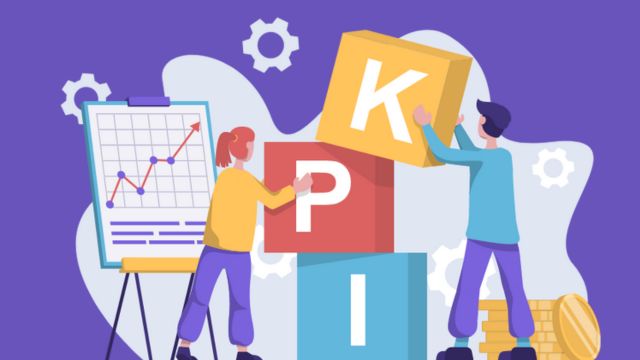A fast-paced business environment has made measuring employee productivity necessary for all organisations to stay competitive in today’s market. As a result, companies need to evaluate the performance of their staff and determine where they might need to boost productivity which can help them increase profitability.
Employee productivity helps to understand how much quality output an employee generates in a set period which then helps to determine their efficiency.
Measuring employee productivity is crucial to confirm that employees are working efficiently to meet their goals.
It takes more than just keeping track of a worker’s hours or the number of tasks they complete to determine an employee’s productivity. Instead, it entails a more thorough examination of an employee’s output and the factors that influence it.
So how do you measure employee productivity? Let’s look into some methods for measuring workforce productivity in more detail.
Tap the Play Icon To Listen This Article
Setting Crystal Clear and Measurable Objectives
The first step for measuring employee productivity is to set specific, attainable goals. Every organisation needs to establish its goals that each employee is aware of. Employees can then prioritise their work and pay attention to the most crucial tasks.
Organisations should think about the following when setting specific, quantifiable goals:
- Determining the objectives are precise and pertinent to the employee’s position.
- Do check that the objectives are attainable and reasonable.
- Determine the deadline when to achieve the objectives.
- Track and measure the progress toward your goals.
Once the objectives are clear, it is crucial to inform the staff about them and double-check that they have the necessary tools to carry them out.
You can also invest in an employee assessment tool to measure their productivity.
Employee Productivity Measurements Tools
Using employee productivity measurement tools is another efficient way to track tasks, time, and productive hours. It is the best approach to measure employee productivity if one wants easy access to data in a few clicks.
By analysing this data, managers can identify areas where employees are productive and where they can improve.
Using this information, employers provide feedback, training, and resources to help employees reach their full potential. If you have not implemented it yet then EmpMonitor can be the best choice as it offers multiple advanced features to track, measure and evaluate employee productivity.
It is a software that helps businesses to effectively manage their workforce with respect to employee monitoring and productivity tracking. Apart from this, EmpMonitor also offers various other Data loss prevention features to ensure data security and safety of the organisational assets.
Check our some key feature of EmpMonitor,
- Time Tracking: EmpMonitor records and analyses time spent on different activities such as active time, productive time and neutral time. It allows employers with time tracking, project management, and resource allocation.
- Productivity Analysis: You get detailed reports and analytics on individual and team productivity levels. Managers can use it to identify top performers, understand bottlenecks, and make data-driven decisions which can help in increasing productivity.
- Employee Monitoring: With EmpMonitor, you get real-time tracking of employees’ activities, which includes web browsing and use of applications.It helps employers identify and address unproductive behaviour and time wastage.
- Website and Application blocking :Using EmpMonitor, employers can set limitations on websites and applications that ensure employees stay focused on work-related activities. This feature helps minimise distractions and maintain a productive work environment.
- Data Security: EmpMonitor protects sensitive information with the help of file tracking, screenshot capture and USB detection, it also helps in data loss prevention.
EmpMonitor is a user-friendly and customisation tool according to the specific needs of any organisation.
It empowers businesses to optimise their resources, foster a culture of productivity, and drive success by providing valuable insights into employee productivity and behaviour.
Time and Output Monitoring
A common technique for measuring employee productivity is time tracking. It assists companies in determining how much time is spent on productive activities by employees. Employers can easily identify the areas where employees are wasting their time and investing productively as well.
With the Time Tracking feature of EmpMonitor, employers can easily figure out the active time, ideal time, break times, productive time, unproductive time and much more. It gives you an overall break-down of how a particular employee has spent the day.
Another way of measuring employee productivity is output monitoring. You can calculate the employees total output with respect to the given length of time.
Managers can use this to make informed decisions on assigning tasks accordingly.
Quality Assurance
A key component in measuring employee productivity is quality control. It involves measuring the quality of work an employee delivered and ensuring that it meets the required standards. This can be done by looking over reviews, customer comments, or work-related issues.
Businesses can pinpoint areas where workers need to enhance the quality of their work and staff members can comprehend the value of producing high-caliber work which overall leads to improved productivity.
Employee Feedback
Evaluating employee productivity reports through frequently taking feedback is a potent approach that entails gathering employee input on their job, issues they are facing, and taking suggestions on how to fix them.
With feedback, businesses can identify and tackle any roadblocks hampering employee productivity.
Moreover, employee feedback offers businesses a window into staff needs and concerns, enabling them to take the right action. This insight can spotlight areas requiring additional resources, training, or support to optimize employee productivity.
Overall, soliciting employee feedback provides a mechanism for continuous improvement and can help businesses enhance their workforce’s efficiency metrics and output.
Key Performance Indicators (KPIs)
Key performance indicators (KPIs) are instruments businesses use to monitor development and assess the effectiveness of reaching particular goals.
KPIs offer a quantifiable way to evaluate performance and spot improvement opportunities in the context of staff productivity.
Businesses can monitor staff productivity using a variety of KPIs, including sales targets, revenue growth, customer satisfaction scores, and employee turnover rates. These metrics enable businesses to keep tabs on employee performance efficiency metrics concerning specified goals, revealing their strengths and potential areas for improvement.
When properly implemented, KPIs for employee growth can assist companies in measuring and increasing the productivity of their employees by giving them a way to detect and resolve problems.
KPIs increase transparency, improve performance, and confirm everyone strives for the same objectives.
Additionally, it enables businesses to optimise processes and allocate resources effectively, ultimately leading to higher productivity and profitability.
Importance of Measuring Employee Productivity
- Improved performance: Measuring employee productivity helps businesses to easily track areas where employees need to improve and enhance for better results. This helps their employees to be more efficient in their work, increase productivity and be effective. All this leads to improved job satisfaction and better engagement.
- Goal achievement: When employers measure employee productivity, it helps them to track progress towards specific goals and objectives. When expectations are clear, and the performance tracking is proper, both employers and employees can work towards the same goals. This leads to success and increased productivity as well
- Best use of resources: Measuring employee productivity can also help businesses make better use of their resources. When information about efficient workers and processes is available, employers utilize their resources better for effective and profitable work. This helps businesses to deal with competition ahead.
- Engagement of employees: Measuring employee productivity is the prime factor for boosting employee engagement and job satisfaction. Regular performance reviews can help employees feel valued and connected to their work, which leads to greater motivation and a more positive workplace environment.
- Competitive advantage: Measuring employee productivity can provide an organization with a significant competitive advantage.
Organizations can make the best use of their resources, simplify processes, and stay ahead of their competition by pinpointing areas where employees can be more productive. This can help businesses succeed in a highly competitive market.
ALSO READ
10 BEST STRATEGIES FOR MEASURING EMPLOYEE ENGAGEMENT
6 REASONS WHY YOUR BUSINESS NEEDS DIGITAL WORKFORCE MANAGEMENT
WHY IS DAILY ACTIVITY REPORT IMPORTANT FOR EMPLOYEE TIME MANAGEMENT?
What Is Lost Productivity? Tips To Handle Productivity Loss
Wrap-up
In conclusion, the significance of measuring employee productivity is highly noteworthy. By identifying top performers in the workplace and all the areas for improvement, businesses can utilise them and improve performance and drive success.
Workforce productivity measurement helps to provide valuable insights for better decision-making.
Measuring employee productivity is crucial for achieving organisational goals and improving the essentials. It also cultivates a positive work environment that addresses the needs of employees.
When employees feel that their contributions are valued, they are more likely to be engaged and motivated, ultimately leading to increased productivity and success. Therefore, businesses should prioritise measuring employee productivity and use the insights gained to drive continuous improvement and success.


















